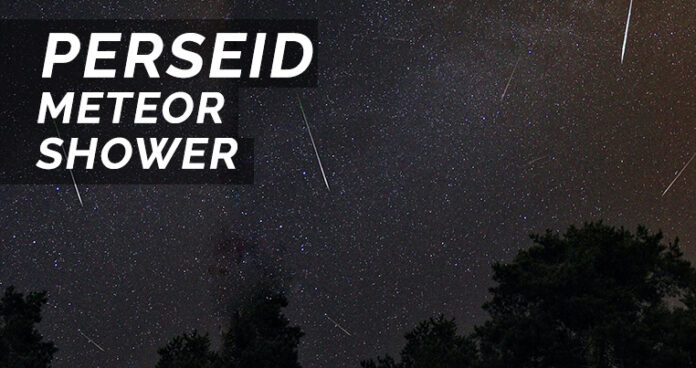Perseid Meteor Shower is all set to create awe-inspiring views in the summer skies of the Northern Hemisphere. According to space observes the showers in mid-August are the biggest ones in the entire year. It means that earth dwellers can also catch a glimpse of a few if they are at the right place at the right time. Reportedly, the meteors showers are going on since July 23 and they will last till August 22. The peak activity will happen between August 11 midnight to August 13 dawn. The peak is considered the highest number of meteors fall per hour. According to NASA, the crescent moon is going to set early so the skies are going to be dark. However, it also added that not everyone would be able to see the event because of excessive urbanization around the world. This is why the company will run a live broadcast so space fans can see the shooting stars from their home, on their screens.
What is Perseid Meteor Shower and When Does it Happen?
Perseid meteor shower enters the Earth’s atmosphere around August every year. These are small fragments of rock and ice called Perseids because they originate from the Perseus constellation. The name is derived from the Greek word “Perseidai” which means the sons of Perseus (Greek mythology hero). They are released into space from the comet Swift-Tuttle. This comet periodically makes close approaches to the earth. Once it led the scientists to believe that it would finally collide with the Earth in 2126, causing the end of the world. However now they say that the doomsday is delayed as the comet will only pass through the Earth closely in 2126. Perseids break into the inner solar system creating a stream of debris. Whenever Earth passes through this stream, meteor showers show up in the skies.
Scientists claim that one can see as much as 100 meteors per hour. However, it has not been the case this year yet. Many people living around the recommended areas have reported a maximum of 20 meteors per hour. According to records, the showers of 1993 were the most frequent which included up to 300 meteors per hour. An intense shower similar to that is expected in 2111.
The Best and Worst Places to Watch the Event
The obvious reasons that may obstruct the view of the Perseid meteor shower are the cloudy sky and the smoke and light from the cities. In order to get a good look, viewers will have to make sure that there are no clouds in the area and they are away from cities. Bright city sky hides the showers or sometimes they just appear faintly. Quite honestly, the city dwellers can’t even see the moon properly so watching a falling star for them is way far-fetched. NASA shared a map in one of their blogs on the websites that calculated how many meteors per hour can viewers expect to see from their respective locations.
It illustrated that in the U.S. countryside where the skies are dark with visible stars and the milky way and no clouds, viewers can see 25 to 49 Perseids per hour. It means there will be at least one after every couple of minutes. On the other hand, the bright skies of suburbs further reduce the visibility. Here viewers would only find 8-10 Perseids per hour or one after every 7 minutes. This is why avid Perseid watchers were disappointed who hoped for hundreds of meteors but did not even find more than 10 in one hour. They were still way better off than the city folks who will only get to see the brightest and spectacular ones, that might be visible after an hour or two.
The chances to view the shower at such locations are almost the same all over the world. It does not mean that UK’s or Europe’s countryside would show more than what is appearing in the U.S. countryside. It all depends on the clear skies and not on any geographical location where one can have a better chance of watching the event than the other.
In Case you Miss it
It’s true that Perseids meteor shower can be the most cinematic one but in case if viewers miss it, they can still catch other showers occurring later this year. According to reports, following meteor events are lined up
Draconids on October 8
Orionids on October 21
South Taurids from November 4 to 5
North Taurids from November 11 to 12
Leonids on November 17
Geminids from December 13 to 14
Ursids on December 22


